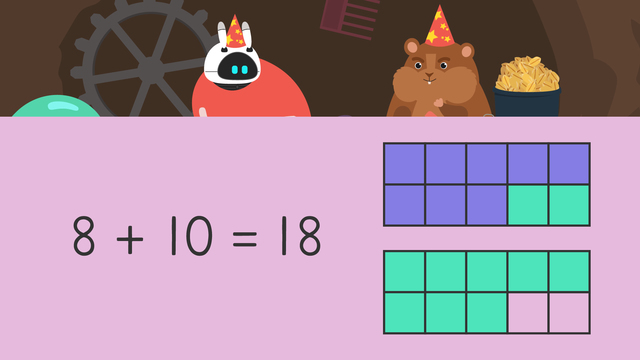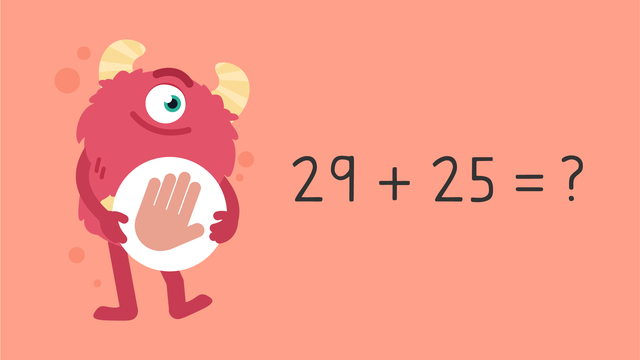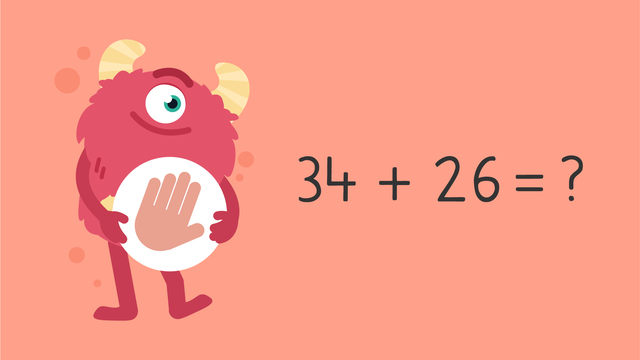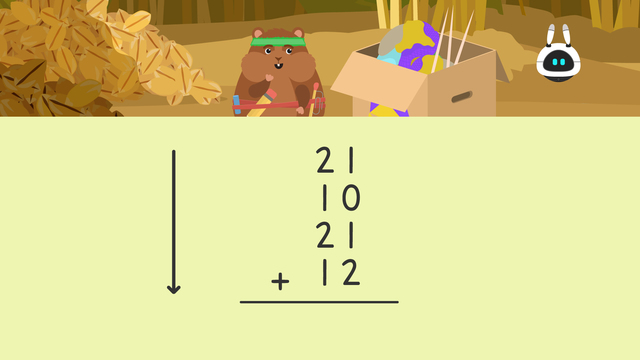Order in Adding
Basics on the topic Order in Adding
The Commutative Property of Addition – Order in Adding
In this text we will learn more about the order of numbers in addition and addition property of order. What is order in adding? And what is the definition for commutative property of addition? Let’s look at the definition for order in addition:
When we talk about order in adding, we're discussing which number to add first in an addition equation. This is also known as the commutative property or, the commutative order property of addition.
What is the commutative order property of addition? You may have heard grown ups say that cars commute, well did you know that numbers do too? Commute is another way to say travel. Cars travel from one place to another, and numbers can too!
Order of Addition – Rules
When numbers in addition travel, or commute, in an equation, it means those numbers have moved, or, were rearranged. Even when you rearrange the addends, the sum, or total, will always be the same. When rearranging, or moving addends, follow these steps:
| Step # | What to do |
|---|---|
| 1 | Set up the equation |
| 2 | Solve using a strategy, like ten frames for example. |
| 3 | Once you have solved the first equation, create another by moving, or, rearranging the addends. |
| 4 | Solve again using ten frames. |
Even though the addends commuted, the sum remains the same!
Order of Addition – Example
Let’s practice the order in addition with the commutative property of addition in the example below.
We want to start by adding twenty-two and twelve. How can we use order in adding to see the sum and to see if the operation is commutative? Remember, these are the steps to use order in addition:
- Start by setting up an equation.
- Next, solve using a strategy that works for you, like ten frames.
- Once you have solved the first equation, create another by moving, or, rearranging the addends.
- Then, solve again using ten frames.
- If the sum for both operations is the same, the addition operation is commutative.
What do you notice? The sum is the same! Which equation shows the commutative property of addition? Twenty-two plus twelve!
What does the commutative property of addition mean? The commutative property of addition means that the order in which you add does not change the sum! Let’s take a look at an example of the commutative property of addition and compare it to what we have been learning about order in adding.
What do you notice about the commutative property of addition? You might notice that with addition it is the same as the rules in order in adding! If we add thirty-seven plus fifteen we get fifty-two, and if we add fifteen plus thirty-seven we also get fifty-two!
Order in Adding – Summary
Today we learned about the order in adding. That's when you decide which numbers to add first. We also learned about the commutative property and commuting numbers. Remember, when addends commute, those numbers rearrange, but the sum alwaysstays the same.
Want more practice on the order in adding? Take a look at the end of this video for changing order of addition property and commutative property of addition exercises and worksheets.
Transcript Order in Adding
Mr. Squeaks and Imani are getting ready for a birthday party! They want to make goodie bags for their guests to take home, but, they have a problem. Mr. Squeaks wants to add mini erasers first, while Imani wants to add sprinkles first. Will the order change the total number of goodies put in the bag? Let's help Mr. Squeaks and Imani solve this problem by learning about 'Order in Adding.' What IS order in adding? When we talk about order in adding we're discussing which number to add first in an addition equation. This is also known as the commutative property. You may have heard a grown up talk about commuting, this is another way to say travel. You know that cars can travel... however, did you know that numbers can travel as well? When addends travel, or commute, in an equation, it means those numbers have moved, or, rearranged. Remember, addends are the numbers that we are ADDING together. Even when you rearrange the addends, the SUM, or total, will always be the same. Let's see if order in adding will change Mr. Squeaks and Imani's goodie bags. Mr. Squeaks and Imani have different opinions about what to add first in their goodie bags. When rearranging, or moving addends, always start by setting up an equation. Here our equation is ten plus eight. Next, solve using tens frames. Ten plus eight equals eighteen. Once you have solved the first equation, create another by moving, or, rearranging the addends. Here we will rearrange to create eight plus ten. Then, solve again using tens frames. Eight plus ten equals eighteen. Even though the addends commuted, the sum remains the same! Next, Mr. Squeaks wants to start by adding twenty-two seeds, but Imani wants to start with twelve flowers. How can we use order in adding to help them see their sum? (...) First, set up an equation. Here it is twenty-two plus twelve. Next, solve the equation using tens frames. After that, commute your addends to create a new equation. Here, we can rearrange the addends to create twelve plus twenty-two. Use tens frames to solve this equation too! Twelve plus twenty-two equals thirty-four. Then, compare the sums, what do you notice? (...) The sum is thirty-four no matter which addend comes first! Finally, Mr. Squeaks wants to add thirty-three mushrooms first, BUT Imani wants to add fifteen nails. How can they use order in adding to understand their sums? (...) First, start by creating an equation. Next, use tens frames to solve the equation. (...) Then, commute those addends and create a new equation! You can use tens frames to solve this new equation as well. Finally, compare the sums using tens frames. How much is thirty-three plus fifteen? (...) Thirty-three plus fifteen is forty-eight, AND fifteen plus thirty-three equals forty-eight! Before we see those goodie bags, let's review! Today we learned about order in adding. That's when you decide which addend to add first. We also learned about the commutative property and commuting numbers. Remember, when addends commute, those numbers rearrange, but the sum ALWAYS stays the same... and that you can use tens frames to help add! Now, let's see those goodie bags. : [voice like he's falling into something] "Oh no!" : "Imani? Imaaani! I'm stuck in a bag! Help me out!" :
Order in Adding exercise
-
Which equations does this show?
HintsThere are two correct answers.
How many pencils and how many erasers were put into each bag? These are your addends.
Can the two addends be added together in any order?
SolutionThere are 7 pencils and 8 erasers in each bag.
7 + 8 = 15 and 8 + 7 = 15. These answers are both correct.
When we have two amounts to add together, we can add them in any order.
-
Match the pairs that are equal equations.
HintsWhat is the total of the first pair? First find the amount of green squares, then the amount of purple squares.
Is there another ten frame that has the same total but the addends are in the opposite order?
SolutionThe image shows the pair that shows 5 + 8 = 13 and 8 + 5 = 13
----------------------------------------------
The other pairs are:
8 + 10 = 18 and 10 + 8 = 18
12 + 22 = 34 and 22 + 12 = 34
13 + 25 = 38 and 25 + 13 = 38
-
Complete the equations.
HintsThe first number sentence is to add the purple and green, so count how many purple squares and put this number in the first gap.
The second number sentence is to add green and purple, so count how many green squares and put this number in the first gap.
The commutative property tells us that we can add the two addends in any order and we still get the same answer. For example, 4 + 6 = 10 and 6 + 4 = 10.
SolutionThere are 14 purple and 18 green squares. These can be added together in both ways and the answer is still 32.
14 + 18 = 32 and 18 + 14 = 32.
-
Which images answer the question?
HintsThere are two correct options.
Which tens frames have 16 and 8 shown in purple and green?
The total number of colored squares is equal to 16 + 8.
Solution- There were two options that correctly displayed this problem.
- Since there were 16 balloons and 8 pieces of candy, we could do: 16 + 8 = 24 OR 8 + 16 = 24.
-
How many treats are in each party bag?
HintsCount how many heart stickers there are and how many star stickers there are, then add these together.
Count how many stickers there are in total on the tens frames.
Solution- There are 8 star stickers and 9 heart stickers.
- In total there are 17 stickers.
- 8 + 9 = 17
- 9 + 8 = 17
-
Matching equations.
HintsLook at the two addends within the equation, can you see another equation with those same two addends?
In an addition number sentence, the total can come at the end or the beginning of the number sentence.
SolutionThe image shows the pairs matched correctly.

Order in Adding

Using Make Ten to Add

Compensation in Addition

Compensation in Addition — Let's Practice!

Subtract Using Addition — Let's Practice!

Make a Number Line to Add — Let's Practice!

Adding Four Two Digit Numbers

Using Place Value to Subtract (Regrouping)

Using Place Value to Add Two Digit Numbers (No Regouping)













